Stir-fried goose eggs, a dish often overlooked in favor of their chicken egg counterparts, offer a rich, velvety texture and a depth of flavor that can elevate any meal. While goose eggs are larger and have a higher fat content than chicken eggs, their culinary potential is vast when prepared with care. This article delves into the techniques, ingredients, and secrets to creating a stir-fried goose egg dish that is both comforting and gourmet. Whether you’re a seasoned home cook or a novice in the kitchen, this guide will equip you with the knowledge to transform simple ingredients into a memorable dish.
Understanding Goose Eggs: A Brief Introduction
Before diving into the recipe, it’s essential to appreciate what makes goose eggs unique. A single goose egg can weigh up to six times more than a large chicken egg, with a thicker shell and a yolk-to-white ratio that leans heavily toward the yolk. This results in a creamier, more robust flavor profile. Goose eggs are also richer in nutrients like omega-3 fatty acids, vitamin B12, and iron, making them a nutritious addition to your diet. However, their size and density require adjustments in cooking techniques to avoid a rubbery or greasy texture.
Ingredients: The Foundation of Flavor
The beauty of stir-fried goose eggs lies in their versatility. While the star of the dish is undeniably the egg, the supporting cast of vegetables, aromatics, and seasonings can transform it into a symphony of tastes. Here’s a breakdown of the key ingredients:

- Goose Eggs (3–4 large eggs): Freshness is critical. Look for eggs with unbroken shells and store them in the refrigerator until use.
- Aromatics:
- Garlic (4–5 cloves): Minced or sliced, garlic adds a pungent, savory base.
- Ginger (1-inch piece): Freshly grated ginger imparts a warm, slightly spicy note.
- Spring Onions (3–4 stalks): Separate the white and green parts; the whites are stir-fried first, while the greens are used as a garnish.
- Vegetables:
- Bell Peppers (1 medium, any color): Diced for sweetness and crunch.
- Onion (1 small): Sliced into thin wedges for caramelization.
- Mushrooms (1 cup, sliced): Shiitake or button mushrooms add earthiness.
- Carrot (1/2 cup, julienned): For a hint of sweetness and texture.
- Seasonings:
- Soy Sauce (1–2 tbsp): Use light soy sauce for saltiness without overpowering the dish.
- Oyster Sauce (1 tbsp): Adds umami and a glossy finish.
- Sesame Oil (1 tsp): A finishing touch for aromatic depth.
- White Pepper (1/4 tsp): Subtler than black pepper, it enhances the eggs’ flavor.
- Cooking Oil: Neutral oils like vegetable or peanut oil work best for high-heat stir-frying.
- Optional Additions:
- Chili Flakes or Fresh Chilies: For heat.
- Cilantro or Basil: For freshness.
- Protein: Cooked shrimp, diced ham, or tofu cubes can add heft.
Preparation: The Key to Perfect Texture
Stir-frying is a high-heat, quick-cooking method that demands precision. Prepping ingredients in advance ensures nothing burns or overcooks.
-
Crack and Whisk the Eggs:
- Crack the goose eggs into a bowl. Add a pinch of salt and white pepper.
- Whisk vigorously until the mixture is frothy and uniform. This incorporates air, ensuring light, fluffy eggs.
-
Prep the Vegetables:
- Dice bell peppers, slice onions, and julienne carrots. Keep vegetables uniform in size for even cooking.
- Mince garlic and ginger.
-
Mix the Sauce:
In a small bowl, combine soy sauce, oyster sauce, and a splash of water (1–2 tbsp). This prevents the sauce from becoming too salty and helps distribute it evenly.
Cooking Technique: Step-by-Step Mastery
Step 1: Heat the Wok
Place your wok or large skillet over high heat. Allow it to smoke lightly before adding oil. This ensures the wok is hot enough for stir-frying.
Step 2: Cook the Aromatics
Add 1–2 tbsp of oil. Swirl to coat the pan. Toss in the garlic, ginger, and white parts of the spring onions. Stir-fry for 30 seconds until fragrant but not browned.
Step 3: Stir-Fry the Vegetables
Add the harder vegetables first (carrots, bell peppers) and stir-fry for 2–3 minutes. Follow with onions and mushrooms. Cook until tender-crisp, about 2–3 minutes. Overcooking vegetables leads to mushiness, so keep them vibrant.
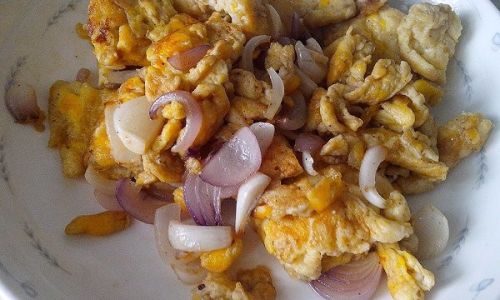
Step 4: Cook the Eggs
Push the vegetables to one side of the wok. Pour the whisked eggs into the cleared space. Let them sit for 10–15 seconds to set slightly, then gently scramble with a spatula. Avoid overstirring; large, soft curds are ideal.
Step 5: Combine and Season
Once the eggs are partially cooked, mix them with the vegetables. Pour in the prepared sauce. Toss gently for 1–2 minutes until the eggs are fully cooked but still moist.
Step 6: Finish with Flavor
Drizzle sesame oil over the dish and toss. Garnish with spring onion greens, cilantro, or chili flakes.
Tips for Perfect Stir-Fried Goose Eggs
-
Don’t Overcrowd the Pan:
Cooking in batches if necessary prevents steaming and ensures a sear. Overcrowding lowers the wok’s temperature, leading to soggy results. -
Adjust Seasoning to Taste:
Goose eggs have a distinct richness. Taste before serving and add a pinch of salt or a splash of soy sauce if needed. -
Experiment with Vegetables:
Substitute or add vegetables like snap peas, bok choy, or bamboo shoots for variety. -
Master the Heat:
High heat is non-negotiable for stir-frying. Invest in a wok with a sturdy base if possible. -
Serving Suggestions:
Pair with steamed jasmine rice, noodles, or a crisp salad. The dish’s richness balances well with acidic sides like pickled vegetables.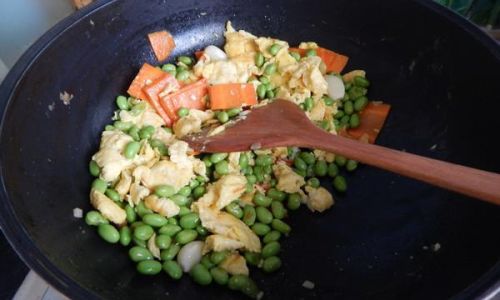
Variations to Explore
-
Spicy Sichuan-Style:
Add doubanjiang (chili bean paste) and Sichuan peppercorns to the aromatics. Garnish with crushed peanuts. -
Protein-Packed:
Toss in cooked shrimp, diced chicken, or cubed tofu during the vegetable stir-fry stage. -
Herb-Infused:
Finish with a handful of fresh basil or Thai basil for an aromatic twist. -
Breakfast Version:
Omit vegetables and serve with crusty bread or roasted potatoes.
Troubleshooting Common Issues
- Rubbery Eggs: Overcooking is the culprit. Remove the pan from heat once the eggs are just set.
- Bland Flavor: Enhance with a splash of rice vinegar or a pinch of sugar to balance saltiness.
- Greasy Texture: Use a paper towel to blot excess oil before serving.
The Cultural Significance of Stir-Frying
Stir-frying, a cornerstone of Chinese cuisine, dates back over 1,500 years. Originally developed to conserve fuel and nutrients, the technique emphasizes speed and precision. Goose eggs, while less common in modern stir-fries, were historically prized for their size and flavor. Today, they offer a nostalgic nod to culinary traditions while fitting seamlessly into contemporary meals.
Conclusion: Elevating the Everyday
Stir-fried goose eggs are a testament to the magic of simplicity. With minimal ingredients and technique, you can create a dish that is both humble and luxurious. Whether served as a quick weeknight dinner or a centerpiece for a feast, this recipe invites creativity and rewards attention to detail. So crack open a goose egg, fire up your wok, and let the sizzle of the pan herald a meal that celebrates flavor, texture, and the joy of cooking.
As you savor each bite, remember that the best dishes are those made with intention. Adjust the seasonings, experiment with add-ins, and most importantly, share this dish with those you cherish. After all, food is not just sustenance—it’s a language of love.
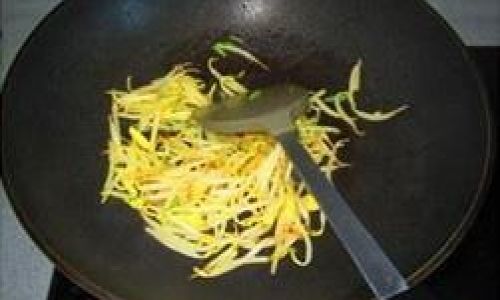

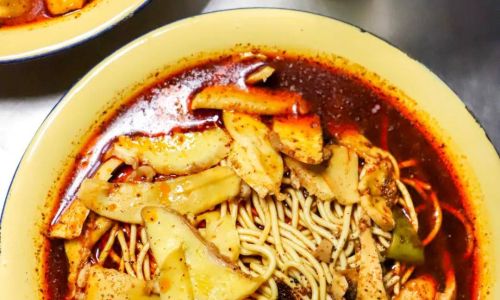
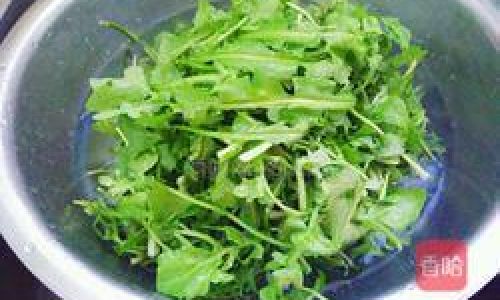
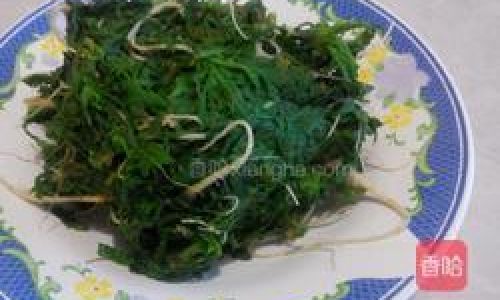
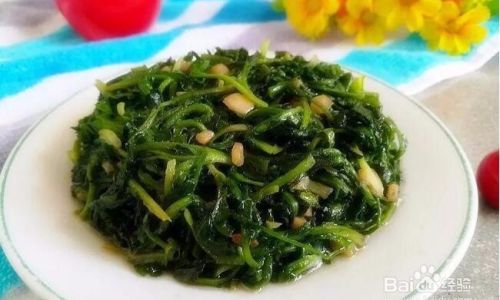
0 comments